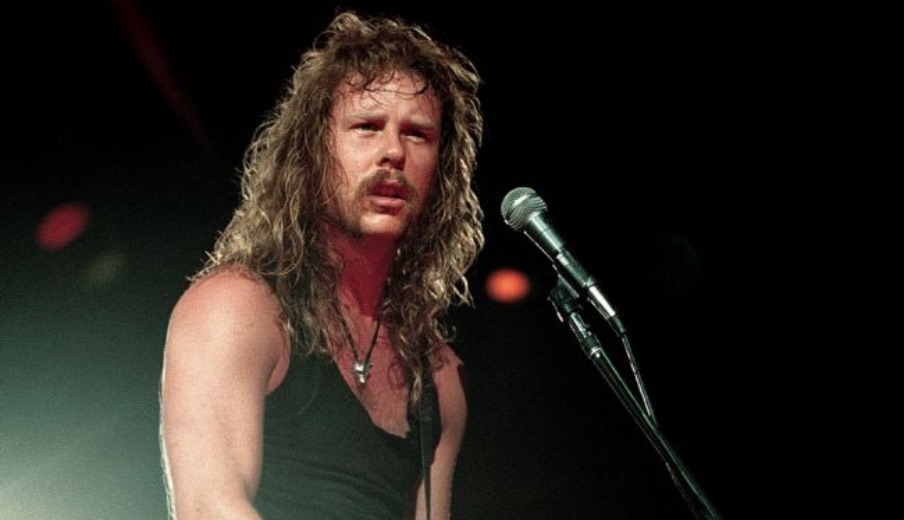The secrets behind James Hetfield's guitar sound on Metallica's Sad But True
Learn how James Hetfield got his monstrous rhythm guitar tone on this classic Metallica track

Sad But True
Metallica, Black Album (1991)
Guitarist: James Hetfield (rhythm part only)
What’s genuinely sad but true is that you’ll need to spend a fortune if you want to duplicate James Hetfield’s monstrous rhythm guitar tone on this track with a rig identical to what he originally used. And that doesn’t even include the studio, its equipment and the prodigious talents of producer Bob Rock and engineers Randy Staub and Mike Tacci. Here we can cover only about 60 percent of what went into crafting Hetfield’s sound, and even then we need to speculate, as the details still remain closely guarded secrets.
Hetfield’s rhythm guitar part is composed of numerous layers of tracks recorded through different amps and cabinets (including overdubs of individual amps dialed to different tones), various mics in different positions and outboard equalization and compression. The core of Hetfield’s sound is a mid-Eighties Mesa/Boogie Mark IIC++ (the extra plus denotes a Mesa modification), most likely with a pair of Aphex EQF-2 EQs and an Aphex CX-1 Compressor/Expander in the effects loop. The Mesa’s five-band graphic EQ—in a scooped mid “V” configuration—plays a key role, but the Aphex EQs further sculpt the tone, particularly by cutting 1.2kHz (this frequency cut was also the secret to Dimebag Darrell’s rhythm tone). Marshall amps strategically restored some of the midrange sculpted out of the Mesas.
Further depth and texture was added by overdubbing a Jerry Jones baritone tuned an octave lower than the guitar, while additional overdubs consisted solely of muted string “chuks” to enhance the percussiveness of the attack. These tracks were all meticulously blended with Jason Newsted’s tight unison bass line to create a massive riff.
ORIGINAL GEAR
GUITARS: ESP MX-220 (black finish) with EMG 81 (bridge) and 60 (neck) pickups (bridge pickup), Jerry Jones Danelectro Longhorn baritone copy (bridge pickup)
AMPS: Mesa/Boogie Mark IIC++ (Volume 1: 9.5, Treble: 5/pull shift, Bass: 2, Middle: 0, Master 1: 4/pull deep, Lead Drive: 6/pull lead, Lead Master: 4, Presence: 3, Graphic EQ: 80: +2, 240: 0, 750: -12, 2200: 0, 6600: +3), modified Marshall JCM800 (settings unknown), Mesa/Boogie Mark IV (settings unknown), ADA MP-1 preamp, Mesa/Boogie Strategy 400 power amp
Get The Pick Newsletter
All the latest guitar news, interviews, lessons, reviews, deals and more, direct to your inbox!
CABINETS: various Marshall 1960B 4x12s with Celestion Vintage 30 speakers
EFFECTS/PROCESSORS: (connected to amp effects loop) Two Aphex EQF-2 EQs (EQ1: 4.2kHz shelving/+6, 1.2kHz/-6, 120Hz shelving/+4, high-pass filter 100Hz; EQ2: 6kHz shelving/+6, 900Hz/-6, 240Hz peaking/-4), Aphex CX-1 Compressor/Expander (settings unknown)
STRINGS/TUNING: Ernie Ball Power Slinky .011–.048/ D standard (DGCFAD)
PICK: Dunlop Tortex .88mm
- ESP LTD EX-401
- Mesa/Boogie Recto-Verb 25 combo
- Mesa/Boogie Boogie Five-Band Graphic EQ pedal
Place the Graphic EQ pedal in the amp’s effects loop for the best-sounding and most dramatic EQ sweep.
Chris is the co-author of Eruption - Conversations with Eddie Van Halen. He is a 40-year music industry veteran who started at Boardwalk Entertainment (Joan Jett, Night Ranger) and Roland US before becoming a guitar journalist in 1991. He has interviewed more than 600 artists, written more than 1,400 product reviews and contributed to Jeff Beck’s Beck 01: Hot Rods and Rock & Roll and Eric Clapton’s Six String Stories.
“Even the thought that Clapton might have seen a few seconds of my video feels surreal. But I’m truly honored”: Eric Clapton names Japanese neo-soul guitarist as one to watch
“You better be ready to prove it’s something you can do”: Giacomo Turra got exposed – but real guitar virtuosos are being wrongly accused of fakery, too











